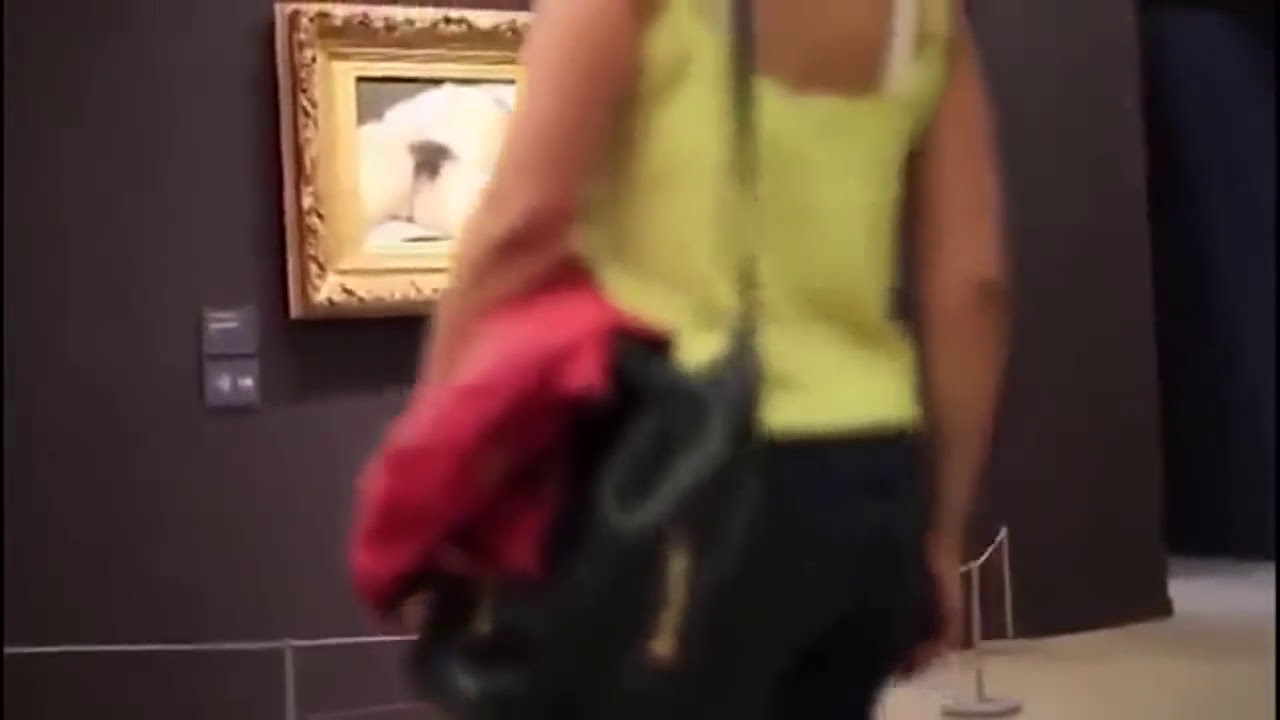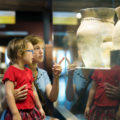
On February 28, 2023, Cambodian dancer Sophiline Cheam Shapiro went to the Famous New York Met Museum and performed a prayer to the looted Cambodian Antiquities. Sophiline Cheam Shapiro immigrated to the States from Cambodia in the 1990s. It was during this time that she first interacted with a Khmer item not in Cambodia. In Cambodia, people believe that spirits can inhabit objects. They say that these spirits can be found in religious statues and nature. Sophiline Cheam Shapiro practices a classical Cambodian dance, recognized as an Intangible treasure of humanity in 2008. The dance was born as a form of a ritual prayer originating from chenla and funan kingdoms where kings would use it to communicate with the heavens to ask for rain. In other words, the dance is sacred. In 1975-1979 when the Pol Pot’s genocide occured 90% of the dance practioners perished and the dance was forbidden.
Sophiline Cheam Shapiro is a member of the first generation to study and perform the classical dance. She routinely goes to museums around the world that house Khmer Antiquities and prays to the gods and ancestors that inhabit them. When her son was at the University he was writing his thesis paper on the value of returning objects such as looted Khmer antiquities as a form of soft diplomacy, it was for this reason that Sophiline Cheam Shapiro became aware of the elaborate network of thieves and unscrupulous art dealers and the complicity of many museums such as the Met museum in this trade.
In February Producers of a podcast wanted to examine the connection between The Met and Latchford and invited Sophiline Cheam Shapiro to participate in the panel discussion. She was asked if she would be interested in dancing before the looted antiquities on display at the Met so that the video could be shared during the panel. Which she had already done ten years prior. On February 28, she entered the Met accompanied by Actress Ellen Wong, Archeologist Meas Sopheap and members of the Dynamite Doug podcast to record her dance. She removed her shoes as custom and Approached the statue of the god Harihara and she prayed for his safe return to the homeland of cambodia. Two minutes into the dance, a member of the museum’s security team approached her and told her that she was not allowed to dance without permission. She was told to put her shoes back on and the team was told they were not allowed to be there. The event surprised her because she felt that she had a legal right to be there given the Met Museum is a public place. She didn’t think it was fair for the Met to define how Cambodians interact with these artifacts.She also invites people to go visit the many museums in Cambodia that teach about the cultural heritage and so that people can experience these artifacts in the proper context without interruption.








I remember reading about this when the new outlets were publishing the story, and wow! Already large museums have been under fire for displaying artwork that people of the cultures the art is from are demanding to be returned to their home country. I think the Met’s actions are really driving the nail into that coffin. I don’t see this debate about who do these relics rightfully belong to going away anytime soon.
It is deeply upsetting that people are not allowed to honor their sacred artifacts that were stolen from them. This artifact that the MET has was not given, it was not bought, it was LOOTED. As I mentioned in the Anti-anti colonialism article comment, these pieces that have been stolen from colonized peoples in incredibly violent ways deserve to be returned to their rightful owners. It is the least that can be done to aid the healing of these people who have to struggle to this day against the horrors that colonialism has caused. Sophiline Cheam Shapiro was not harming the art, she was not hurting any of the patrons, she was only respecting a piece of art work from HER history. I only hope that she has received deep apologies and that the MET has given her the platform to raise awareness to her culture and to the colonist nature of museums.
I wonder if the security guard consulted anyone else on the matter before stopping Sophiline Cheam Shapiro’s dance or if there were any written rules prohibiting such acts at the Met. Since this post did not mention it, I am assuming that the group did not request any prior authorization or permission from the Met Museum to have Sophiline Cheam Shapiro perform her spiritual dance and have the group film her. But even then, the only justifiable reason I see for this prohibition would be if Sophiline Cheam Shapiro was touching or disturbing the Khmer statue or disturbing the public space’s peace (like blocking other spectators, being obnoxiously loud, trashing the space…etc.). If necessary, the security guard could have simply asked for an explanation of her performance to ensure the safety of the museum and others.
I think that Sophiline Cheam Shapiro should’ve been allowed to continue her ritualistic dance. Any person should be allowed to practice their culture as long as they are not harming others and are being respectful of others and their surrounding. Based on the information provided, I do not think that Sophiline Cheam Shapiro caused any harm to anyone with her dance. on the contrary, she is offering her respect to a statue (of the god Harihara) that has cultural and spiritual significance to her and her faith. Her purpose was to pay respect and participate in an education panel; she meant no harm or disrespect to anyone or anything.
I can understand the museum staff trying to maintain order, but in this particular case, the museum should have contacted the artist and sought cooperation. This would both serve the museum’s purpose of showing other cultures and ease the awkward situation of the exhibit.
It is interesting to see how this event unfolded as the museum in the way they present these historical objects for education, these objects were also procured through ways that were not authentic and true. These antiquities hold educational value but they do best so in the place they come from, not displaced within a collection of other items that were looted as well and shown on display. The incident with Sophiline Cheam Shapiro just goes to further show how museums and institutions similar, actively prohibit the authentic use of the antiquities for their own profit and benefit. Whilst the staff and museum may be just “doing their job” they are compliant in the way these objects are displaced.
This definitely leaves a bad taste in my mouth considering Sophiline is much more educated on the importance and significance of these Cambodian Antiquities than Met employees/art enthusiasts. She was appreciating the Antiquities in the way they were intended to be appreciated, and should not have been stopped from performing the dance. I truly wonder if it is an actual rule at the Met that you are not allowed to dance without permission, or if this was just what the security guard said at the time to get her to stop. It is possible that this event is a reflection of just the security guard’s ignorance, and not of the entirety of the Met.
This is sad. Not only have they stripped Sophiline of her right to honor and pray to her gods in the way she sees fit, but they also have stolen this art work from her home country. The way they are disrespecting her and also trying to criminalize her when they are the criminals is disgusting.
This makes me feel very sad. I completely agree with Sophiline, she had a right to be there and I don’t think security can dictate where she can or cannot dance. Not only has this museum stolen the art work she was praying to and honoring, but now they are trying to strip her of her right to honor and pray to her gods.
I think it is shameful how many museums and art galleries claim ignorance when they decide to house culturally significant items. If they wanted to house it, they should have taken the proper steps to allow people to honor the items and participate in their culture. By blocking it, they’ve shown that they know it is wrong, but they don’t care.
I wonder how the Met would have reacted if Sophiline had asked permission prior to performing the ritual prayer. In my mind, the museum would have jumped on the opportunity for free positive publicity by allowing her to perform the prayer while making it an event in itself. In this way, they can justify keeping these stolen artifacts since they can argue that the people who really care will come and engage with the art without museum interference. Of course, these are stolen artifacts, and in my opinion they rightfully belong to the culture that produced them; this goes for Cambodian Antiquities, Greek statues residing in British museums, and looted African relics. This is a conversation that doesn’t get much exposure in my experience, and it ranges from slightly irritating to disgusting how museums will keep these items knowing that it did not make its way there legitimately. Museums are a business, and it is disappointing to know that nothing will probably be done about this.
I think that this event further exemplifies the active compliance of art and historical institutions in stolen cultural pieces. Having recently traveled throughout continental Europe and visited a great many art and history museums, it is incredible to see just how many artifact and art pieces have been taken away from their place of origin. I think that the act stopping and preventing this ritual dance by the Met displays a clear choice on behalf of the institution to ignore (and even suppress) the origin of these artifacts, as well as the cultural significance that may lead patrons to question it’s presence in a western museum. Learning now that it is believed these artifacts may house spirits that hold significance in Cambodian religion makes their presence in institutions like the Met even more unbelievable. I could not imagine the uproar if the Christian counterparts of artifacts were taken and housed in a museum in Cambodia.
The incident involving Sophiline Cheam Shapiro at the Met Museum is a poignant reminder of the complexities surrounding cultural heritage and the clash between institutional protocols and personal connections to one’s culture. As a member of the first generation to study and perform classical Cambodian dance, Sophiline carries a profound sense of responsibility and reverence for her cultural traditions. The incident highlights the need for greater cultural sensitivity and dialogue between institutions and communities. Museums play a crucial role in preserving and exhibiting cultural artifacts, but they must also recognize the diverse perspectives and customs of the cultures they represent. By creating spaces that allow for genuine engagement and understanding, museums can foster appreciation and respect for different cultural practices.
I feel like this an example of how a crime long ago can be become embedded in an institution. I look at this, and am saddened at the denial of one’s culture. And yet, I consider the position of the people enforcign this, of what would happen to say, the security guards if they allowed dot practice to continue, or perhaps some other higher ranking person (not justifying their response).They of course, do not feel as attached to the ritual, as the dancer, and therefore, don’t care